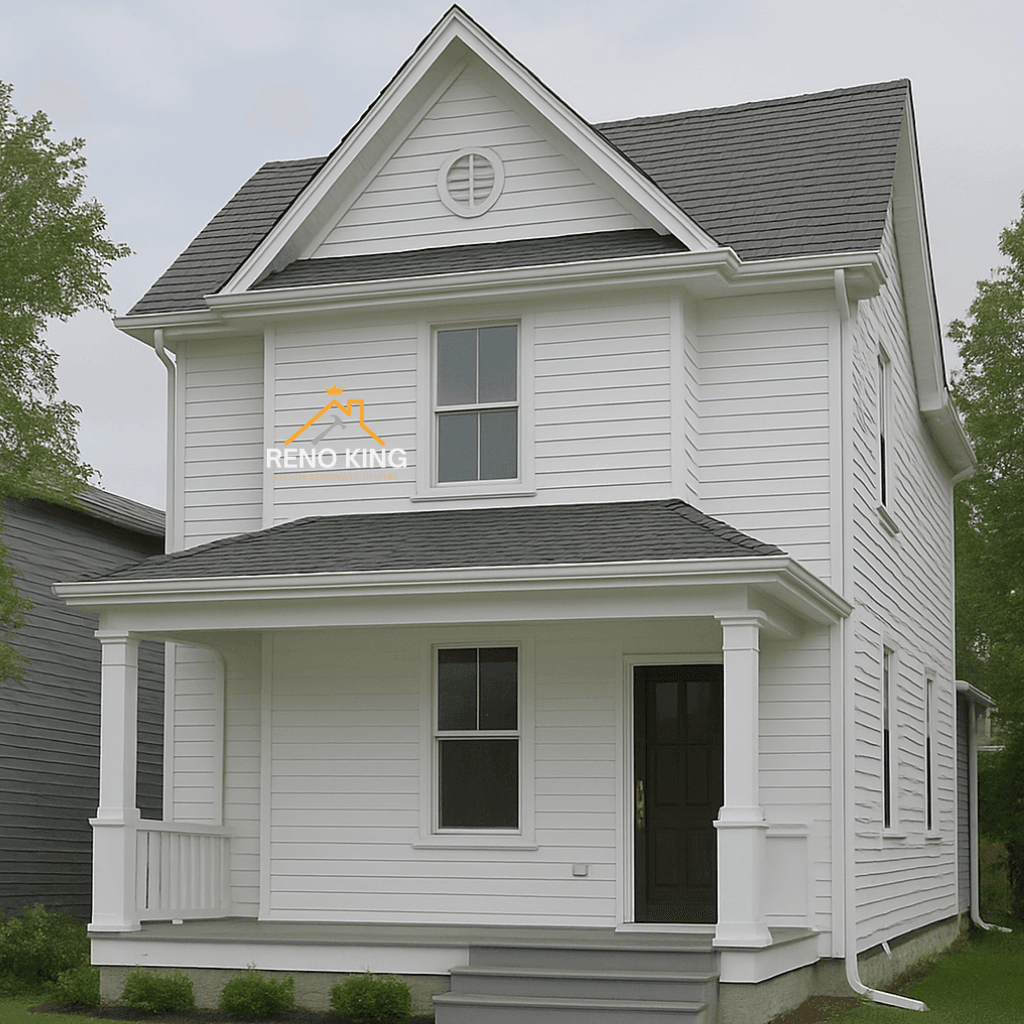Monday, September 1, 2025
Introduction: The Unique Privilege and Responsibility of Heritage Homeownership
Calgary’s heritage homes represent more than just real estate—they are living artifacts that tell the story of our city’s growth from a frontier outpost to a modern metropolitan center. These properties, found in neighborhoods like Inglewood, Mount Royal, Britannia, and Sunnyside, connect us to the generations that built our community. However, owning a piece of history comes with both unique rewards and specific challenges that require careful navigation.
The fundamental tension every heritage homeowner faces is how to balance preservation with modernization. How do you maintain the character and historical integrity of a home while making it functional for 21st-century living? This comprehensive guide will walk you through every aspect of heritage home renovation in Calgary, from understanding municipal regulations to selecting appropriate materials and finding the right professionals for your project. Whether you own a designated heritage property or a “character home” in a historic district, this resource will provide the knowledge you need to approach your renovation with confidence.
Understanding Calgary’s Heritage Designation System
Before planning any changes to your property, it’s essential to understand how heritage protection works in Calgary. The City of Calgary maintains a detailed inventory of historically significant properties through several designation categories:
Municipal Historic Resource (MHR)
This is the highest level of heritage protection in Calgary. Properties designated as MHRs are recognized for their significant historical, architectural, or cultural value to the community. The designation protects both the exterior and interior character-defining elements, and any alterations require approval through a formal development permit process. In exchange for these protections, owners of MHR properties may qualify for heritage grants and tax relief programs.
Registered Historic Resource (RHR)
This voluntary program allows property owners to enter into a agreement with the City to protect their property’s heritage character, typically focusing on exterior elements. While less restrictive than MHR designation, RHR status still provides legal protection for the property’s heritage features and may qualify owners for certain incentives.
Historic Districts and Contextual Homes
Some properties are not individually designated but are located within historic districts where development guidelines still apply. These “contextual” homes contribute to the overall historic character of a neighborhood, and renovations must be compatible with the area’s architectural context.
Determining Your Home’s Status
The first step in any heritage renovation project is researching your property’s status. The City of Calgary’s Historical Resources website provides an interactive map and searchable database where you can find information about your property’s designation status, historical significance, and any applicable guidelines or restrictions.
Navigating the Heritage Permit Process
One of the most critical aspects of heritage renovation is understanding and navigating the municipal approval process. Unlike standard renovations, heritage projects require additional approvals to ensure historical integrity is maintained.
Pre-Application Consultation
Before submitting formal applications, schedule a pre-application meeting with the City’s Heritage Planning team. These meetings are invaluable for understanding what changes are likely to be approved and which might face challenges. Bring preliminary ideas, photographs, and any historical research you’ve conducted about your property. The feedback you receive at this stage can save significant time and money by helping you refine your plans before formal submission.
Development Permit Requirements
For designated heritage properties, a development permit is required for most exterior alterations and some interior changes that affect character-defining elements. The review process evaluates proposals based on:
- Impact on heritage attributes and character-defining elements
- Compatibility with the property’s historical character
- Use of appropriate materials and techniques
- Compliance with the Standards and Guidelines for the Conservation of Historic Places in Canada
Building Permit Considerations
Once development permit approval is obtained, standard building permits are still required. The heritage designation may affect how building code requirements are applied, as alternative solutions may be necessary to preserve historical features while meeting safety and accessibility standards.
Character-Defining Elements: What Makes Your Home Historically Significant
Understanding what gives your home its heritage value is essential before planning any changes. Character-defining elements are the physical features that convey a property’s historical, architectural, and cultural significance. These may include:
Exterior Elements
- Original siding materials (wood clapboard, brick, stone, or stucco)
- Roof form and historical roofing materials
- Window and door styles, patterns, and details
- Porches, verandas, and their decorative elements
- Architectural details such as cornices, brackets, and trim work
- Original foundations and masonry work
Interior Elements
- Floor plans and room configurations
- Woodwork including trim, doors, and staircases
- Flooring materials and patterns
- Plaster walls and ceilings
- Built-in features like cabinetry, shelving, and window seats
- Decorative elements such as fireplace surrounds, lighting fixtures, and hardware
Site Features
- Historical landscape elements
- Original fencing and gates
- Driveway and walkway materials and patterns
- Outbuildings such as garages or sheds
Documenting these elements through photographs, measurements, and notes before beginning any work will help guide your renovation decisions and facilitate discussions with heritage planners.
Modernization Strategies for Key Living Spaces
Successfully modernizing a heritage home requires thoughtful approaches that respect historical character while introducing contemporary functionality.
Kitchen Design Solutions
The kitchen often presents the greatest challenge in heritage homes, as modern expectations for workspace, storage, and appliances frequently conflict with historical layouts.
Layout Strategies: Rather than completely opening up historical floor plans, consider creating a “working kitchen” within existing spaces and adding a separate pantry or preparation area. If an addition is necessary, position it at the rear of the home where it will have less impact on the historical appearance.
Appliance Integration: Choose panel-ready appliances that can be concealed behind cabinetry that matches historical styles. Consider smaller or European-sized appliances that fit better in historical spaces. For ventilation, discreet downdraft systems or ceiling-mounted units may be preferable to large hoods that dominate the space.
Material Selection: Choose countertop materials that complement rather than compete with historical elements. Butcher block, soapstone, and marble often work well in heritage contexts. For cabinetry, simple Shaker or frame-and-panel styles typically feel more appropriate than highly contemporary designs.
Bathroom Modernization
Historical bathrooms were typically small and utilitarian by modern standards. Thoughtful modernization can dramatically improve comfort while maintaining character.
Fixture Selection: Clawfoot tubs, pedestal sinks, and high-tank toilets reference historical styles while providing modern functionality. When sourcing reproductions, look for quality pieces with modern manufacturing standards for reliability and water efficiency.
Space Planning: Many heritage homes lacked ensuite bathrooms originally. Consider converting adjacent closets or reconfiguring smaller rooms to create private bathrooms without compromising significant historical spaces.
Mechanical Systems: Modern ventilation is essential in bathrooms to prevent moisture damage. Small, high-efficiency fans can often be discreetly installed without damaging historical finishes.
Integrating Modern Systems
One of the most significant challenges in heritage renovation is incorporating modern mechanical, electrical, and plumbing systems without damaging historical fabric.
Electrical Systems: Complete rewiring is often necessary in older homes. Carefully plan wire routes to minimize damage to plaster and woodwork. Surface-mounted raceway systems can provide additional outlets while being reversible and less damaging than cutting into historical walls.
Heating and Cooling: Traditional radiators can often be retained and connected to modern boiler systems. For cooling, consider mini-split systems or high-velocity AC that requires smaller ductwork. Focus on improving insulation and air sealing to reduce mechanical system demands.
Insulation and Energy Efficiency: Improving energy performance is often a priority, but must be approached carefully to avoid creating moisture problems. Interior insulation may require sacrificing some interior space, while exterior insulation will affect the home’s appearance and likely require heritage approval. Focus first on air sealing and attic insulation, which typically have less impact on historical materials.
The Specialized Team: Assembling Your Heritage Renovation Experts
Heritage renovations require specialized knowledge that goes beyond standard construction expertise. Assembling the right team is critical to your project’s success.
Heritage Architect
A qualified heritage architect should be your first hire. They understand both historical building techniques and modern building science, and can navigate the municipal approval process. Look for professionals with specific experience in heritage conservation and credentials from recognized organizations like the Canadian Association of Heritage Professionals.
General Contractor with Heritage Experience
Not all contractors are equipped to handle the unique challenges of heritage work. Look for a contractor with demonstrated experience in historical renovations who understands appropriate techniques and materials. They should be comfortable with the unpredictable nature of heritage work and have relationships with specialized subtrades.
Specialized Subtrades
Certain aspects of heritage renovation require extremely specialized skills:
- Plaster restoration specialists who can match historical techniques
- Wood window restoration experts who can repair rather than replace original windows
- Masonry contractors familiar with historical mortars and repair techniques
- Paint analysts who can help determine original color schemes
Heritage Consultant
For complex projects, a dedicated heritage consultant can provide specific expertise in historical research, conservation philosophy, and appropriate treatment approaches.
Budgeting Realistically for Heritage Renovation
Heritage renovations typically cost significantly more than comparable work in newer homes. Understanding where these costs come from will help you budget appropriately.
The “Heritage Premium”
Expect to pay 20-50% more for heritage work compared to standard renovations. This premium reflects:
- Specialized materials that must be custom-made or sourced from specialty suppliers
- Labor-intensive techniques that require more time and skill
- The unpredictable nature of working with old buildings, where hidden issues are common
- Additional design and consulting fees for heritage professionals
Contingency Planning
While standard renovations might allocate 10-15% for contingencies, heritage projects should budget 25-30% or more. Unexpected issues are virtually guaranteed when working with old buildings, and solutions often require specialized approaches that increase costs.
Phasing Your Project
Given the significant costs involved, many homeowners choose to phase their renovations over several years. Prioritize projects that address structural issues, water management, and critical systems first, then move on to cosmetic improvements. A heritage architect can help you develop a phased approach that makes sense both practically and financially.
Case Study: A Thoughtful Heritage Renovation in Mount Royal
Consider the example of a 1920s Tudor Revival home in Mount Royal that underwent a sensitive renovation to accommodate a growing family while preserving its historical character.
The Challenge
The homeowners loved their home’s historical character but needed more functional living space, updated mechanical systems, and better connection to the backyard. The home was designated as a Registered Historic Resource, protecting its exterior appearance.
The Solution
After extensive consultation with heritage planners, the team developed a solution that included:
- A rear addition that respected the original roof form and materials but provided a modern kitchen and family room
- Careful restoration of original windows supplemented with custom-made storm windows for improved energy performance
- A new basement entrance that provided access to a renovated lower level without impacting the home’s street presence
- Integration of modern mechanical systems within existing chases and new discreetly located spaces
The Result
The completed renovation provided the modern functionality the family needed while preserving the home’s historical character. The project received a heritage award from the City of Calgary and serves as an excellent example of how thoughtful design can balance preservation and modernization.
Conclusion: The Rewarding Journey of Heritage Stewardship
Renovating a heritage home is not simply a construction project—it’s an act of stewardship that preserves Calgary’s architectural history for future generations. While the process involves additional challenges, regulations, and costs compared to standard renovations, the rewards are equally significant. There’s profound satisfaction in living in a home with history and character, knowing you’ve preserved something meaningful while making it functional for contemporary life.
The key to successful heritage renovation lies in approaching the process with patience, respect, and the right expertise. By understanding the regulations, assembling a qualified team, and making thoughtful decisions that balance preservation with modernization, you can create a home that honors the past while embracing the future.
Why Specialized Expertise Matters in Heritage Renovation
Heritage renovation represents a unique intersection of historical preservation, modern building science, and regulatory navigation. This specialized field requires specific knowledge that goes beyond standard construction experience—understanding historical building techniques, appropriate materials, conservation philosophy, and municipal heritage processes.
At Reno King, we have developed particular expertise in working with Calgary’s heritage properties. We understand the delicate balance required to preserve historical character while introducing modern functionality. Our team includes professionals experienced in heritage conservation, and we maintain relationships with specialized subtrades who possess the rare skills needed for historical restoration work.
We approach each heritage project with respect for its history and careful attention to the details that make each property significant. From initial consultation through to completion, we prioritize communication with heritage planners and homeowners to ensure projects meet both regulatory requirements and homeowner needs.
If you own a heritage or character home and are considering a renovation project, we invite you to contact us for a consultation. We’re happy to share our experience, discuss the unique considerations of your property, and help you explore possibilities for honoring your home’s history while making it work for your modern lifestyle.




